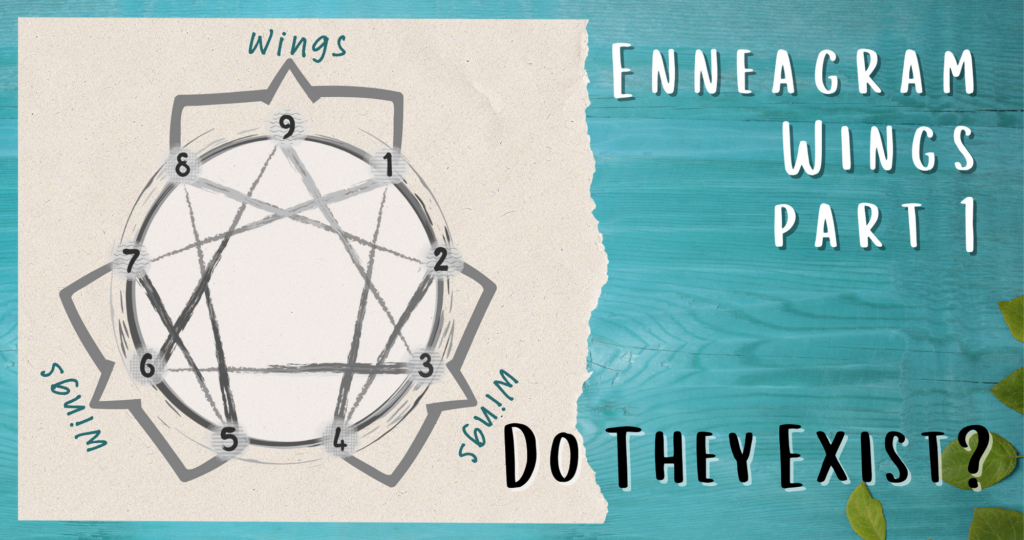In my Enneagram-based certification programs, I am occasionally asked this: “Ginger, why don’t you believe in Enneagram wings?” This question always takes me by surprise because I do write about wings in my books. In addition, the idea of wings often gets brought up in my training programs. Wings are considered to be the two type numbers on either side of your Enneagram type. The general idea is that while wings do not change our core type, they can add qualities and characteristics to our core (dominant) type.
When the question of wings occurs, it offers an opportunity to discuss Enneagram wings in a multi-faceted way. I will attempt to take you on my journey (in somewhat chronological order) in relation to wings as a way to understand what I think about wings and to stimulate your ideas.
Training through the Enneagram in the Narrative Tradition (1994+)
There was little, if any, mention about wings during my certification training with Helen Palmer and David Daniels. That said, there was not much information about arrow lines either; there was some limited information about subtypes, although we were tested on our ability to lead subtype panels. Here, my reference point was 1994-1996 and does not reflect the Narrative Enneagram’s current teaching, with which I am less familiar.
1st IEA conference (Stanford, 1994)
There was a great deal of “buzz” or controversy over a session led by Kathleen Speeth titled (something like) “Wings Don’t Fly.” Kathleen Speeth is a clinical psychologist and Gurdjieff scholar who had been both Claudio Naranjo’s romantic partner and teaching partner. These labels are, as I understand it, not nuanced enough to accurately describe their relationship, but I use them to explain she was in no way an Enneagram newcomer. At the conference, there was consternation about her topic, with the operating assumption being she did not believe in the Enneagram system. I did not go to her session, yet her topic and title instigated my initial wondering about wings as a true and useful theory.
Wisdom of the Enneagram (book)
Published in the mid-late 1990s, this book had an enormous influence of Enneagram thinking and practice. In this writing, the wings are explained in some detail. On occasion, the book refers to the wing as a subtype and sometimes the subtype as an instinct, as in social instinct rather than social subtype. This word choice can be confusing, but the book is reasonably consistent in its usage.
Because I am not EI (Enneagram Institute) trained, although their teachings have greatly influenced me, I can’t speak from direct experience about their exact theory/practice. That said, many EI trained Enneagram teachers and enthusiasts would strongly suggest that a person could only have one wing, never two wings. I rarely hear this anymore, but this framework was quite frequently used up until about 10-15 years ago.
IEA conference presentation (Patrick O’Leary)
Patrick O’Leary, an Enneagram teacher and author who was part of the Jesuits in Chicago who learned the Enneagram in the 1970s from Fr. Bob Ochs, often presents at IEA (International Enneagram) conferences. Lucky for many of us, some of his sessions include original teachings and documents from Fr. Ochs, who learned the Enneagram directly from Claudio Naranjo. At one of Patrick’s sessions, he showed a page from his Fr. Ochs’ notes that showed the following: the Enneagram symbol, the type numbers, and 3 shapes called single braces. The single braces referred to type 9 and was inclusive of 8 and 1, then type 3 and included 2 and 4, and finally type 6, which included types 5 and 7. These and only these were, apparently, Naranjo’s references to wings or were, perhaps, Fr. Ochs’ interpretation of Naranjo’s meaning.
Upon seeing this and learning Patrick’s session commentary, I seriously wonder this: What if the way we’ve been understanding Enneagram wings isn’t actually true?
Multiple exposures to Claudio Naranjo
I’ve had multiple exposures over the years to the teachings of Claudio Naranjo: I’ve read all his books in English, had two exposures at IEA conferences with one in-depth exploration, attended a nine-day program on subtypes in Germany, and participated in three full days at a conference for Claudio’s SAT teachers and students where he had asked me to be a presenter. In none of my readings nor any of his in-person sessions did I ever hear him or any of his teachers mention the idea of wings.
Summary
So I was left wondering this: Are there really wings as we think we know them? What do you think? Stay tuned for the next blog in this series!
Ginger Lapid-Bogda PhD, author of nine Enneagram books, is a speaker, consultant, trainer, and coach. She provides certification programs and training tools for business professionals around the world who want to bring the Enneagram into organizations with high-impact business applications. TheEnneagramInBusiness.com | ginger@theenneagraminbusiness.com


Comments are closed.